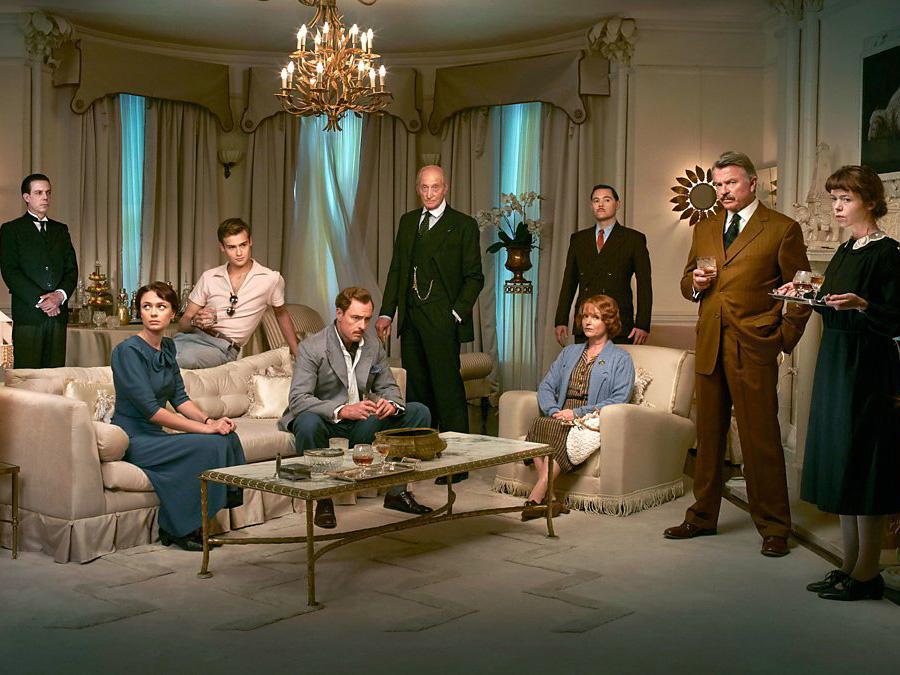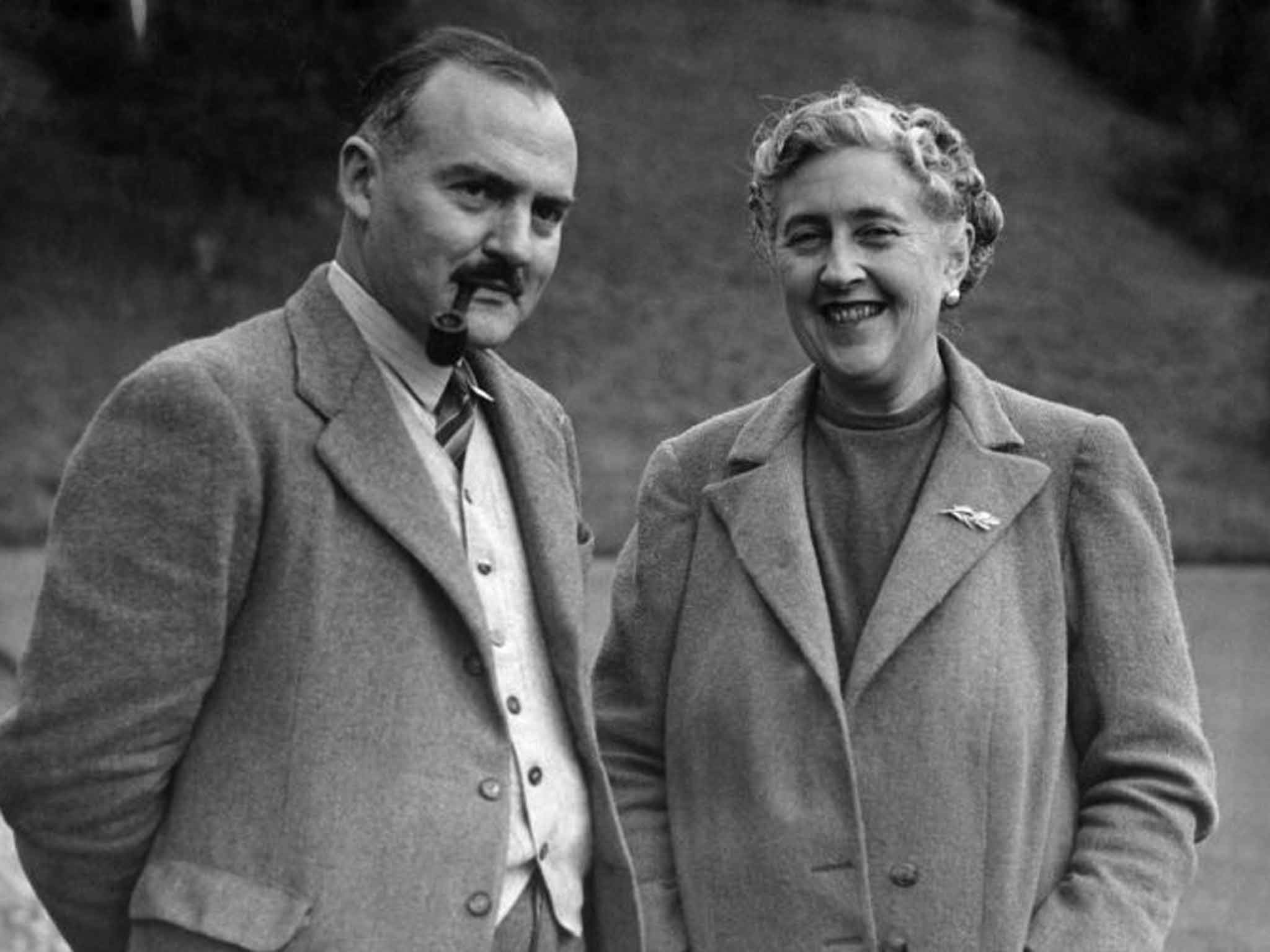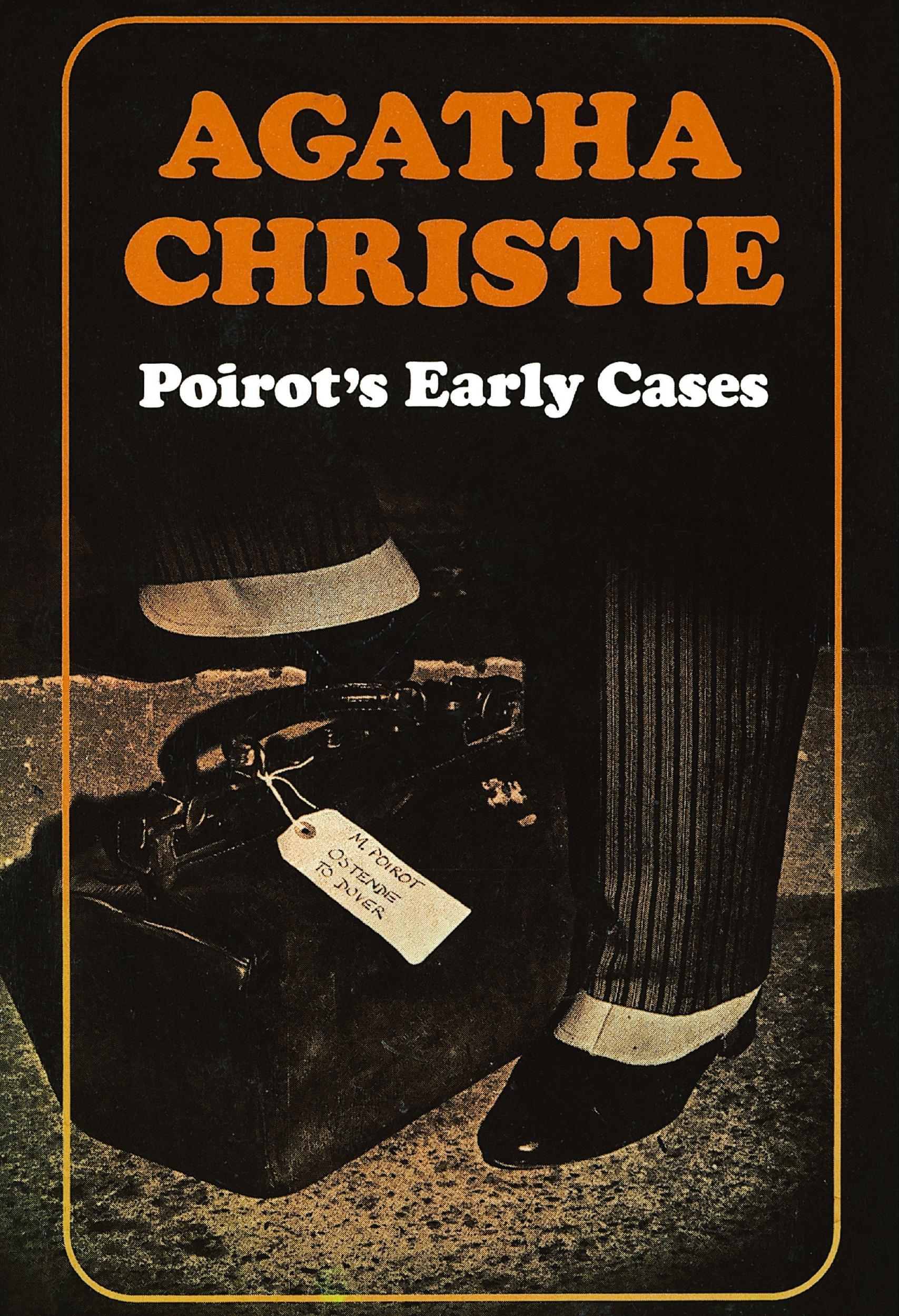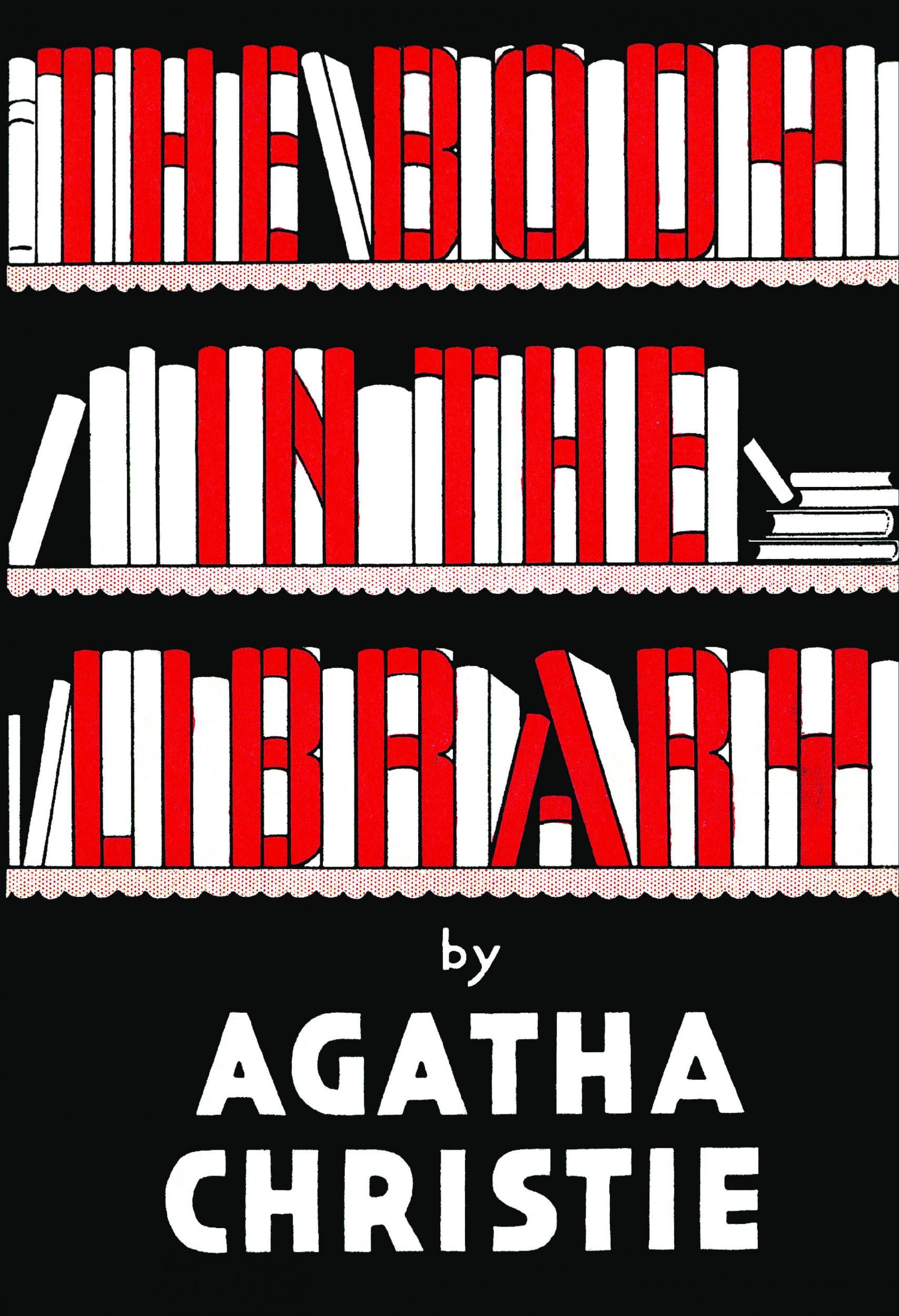Christie's alluring paradox: the compatibility of middle-England villages and homicidal maniacs on the rampage
Agatha Christie enjoyed taking us on a nostalgic trip down a middle-class memory lane, back to a Golden Age of orthodoxy, conformism and shockability. Is that why we love the crime writer, asks Andy Martin

Your support helps us to tell the story
From reproductive rights to climate change to Big Tech, The Independent is on the ground when the story is developing. Whether it's investigating the financials of Elon Musk's pro-Trump PAC or producing our latest documentary, 'The A Word', which shines a light on the American women fighting for reproductive rights, we know how important it is to parse out the facts from the messaging.
At such a critical moment in US history, we need reporters on the ground. Your donation allows us to keep sending journalists to speak to both sides of the story.
The Independent is trusted by Americans across the entire political spectrum. And unlike many other quality news outlets, we choose not to lock Americans out of our reporting and analysis with paywalls. We believe quality journalism should be available to everyone, paid for by those who can afford it.
Your support makes all the difference.A man gets into an elevator on the 20th floor. It has to be “elevator” because this is the Chrysler Building in Manhattan. He is smartly turned out, in a suit and tie. His name is Alex. His loyal but overworked PA, Janice, comes running up and passes him his briefcase (Alex is a forgetful fellow) just before the doors close. He puts his hat on. You, meanwhile, are waiting for the elevator on the ground floor. You watch the numbers tumbling smoothly and rapidly downwards. From 20 down to 1 (this is America, remember), with no pauses or punctuation. Therefore the elevator did not stop at any point on its descent. Less than half a minute after the doors close on the 20th floor, the doors open again on the ground floor. What do you see?
No one gets out. As you go to get in you realise there is a body in the elevator. With blood on the floor. You scream, perhaps. Because Alex, our smartly dressed gent, has a knife planted squarely in his back. His hat lies marooned alongside him. Is he dead? A doctor comes rushing up and tests for a pulse and shakes his head. The question is whodunnit? To which I will try and give an answer, at the end, if you would all care to assemble in the dining room, shall we say, with cocktails in hand, at around 6 o’clock.
It’s a classic Agatha Christie-style mystery, transposed to New York. A closed room. It could hardly be any more closed. With a finite group of characters. It could hardly be more finite. A puzzle to be solved. All we need is a shrewd detective of the calibre of Hercule Poirot or Miss Marple to figure it out.

Theakston Old Peculier Crime Writing Festival, which took place in Harrogate over several days last week, was also host to a new Agatha Christie exhibition, celebrating the life of the novelist but also her close association with Harper Collins – or at least the Collins part of it, which was founded 200 years ago.
Billy Collins published the novel that remains her masterpiece, The Murder of Roger Ackroyd in 1926, and for the next 50 years (she died in 1976) Christie and Collins formed a durable partnership and the letters she wrote to her publisher testify to what a tough and pugnacious individual she was. She was the first millionaire woman author of the 20th century; she didn’t suffer fools gladly; and occasionally felt she was being treated “disgracefully” – “dash it all! ”
But one reason for hosting this relatively thrill-free exhibition in lovely Harrogate at the classy Old Swan hotel was because this is where she popped up after doing a runner. The “lady vanished” for a period of 11 days, back in December of 1926, after her mother died and her First World War fighter pilot husband, Archie, cheated on her in close succession. She had a meltdown, fled the family home at Styles in Berkshire, and was hunted by police, the media, a medium, and Dorothy L Sayers (author of the Lord Peter Wimsey series) until she finally appeared again in Harrogate.
A minor mystery in itself. But not half as ingenious as her own twisted plots. Now Kenneth Branagh is directing and starring in a new film of Murder on the Orient Express. His abundantly bewhiskered Poirot looks nothing like the David Suchet of the mincing steps and the pencil-thin moustache, more like a Russian monk or Mexican bandit. And the finite cast of characters includes Johnny Depp, Michelle Pfeiffer, Judi Dench and Willem Dafoe. The train is another star vehicle. There have been countless film, stage, and television adaptations of Agatha Christie novels. She has sold around a billion books in English alone. But does anyone still read Christie?
One writer I spoke to (I’d better leave him mysterious) at Harrogate said: “I’ve never read a single Christie and I’m not planning to either. I’m trying to get away from Christie. It’s like we’re surrounded by Christie. We breathe Christie. You don’t need to read any of the books.” Another mystery man snorted furiously at the very idea of reading Christie. “Her work is completely pointless. There is nothing real in it. Her books are just silly. ” He added: “You have to respect the sales figures though. ”
Even Tammy Cohen, writing under the pen name Rachel Rhys, who confesses to using Christie-style tropes in her novel Dangerous Crossing (a glamorous cast of characters taking ship to Australia in 1939, exotic locations, cocktails and dinner suits, and a mini-world war afloat), says that, “Of course her plots are preposterous. Even ridiculous. But the aim is not to be realistic. ”

Sophie Hannah is the new Agatha Christie. She was appearing on a panel in Harrogate called “Carrying the Torch”. She has opened a Poirot franchise, with the blessing of the Christie estate and Harper Collins. “It’s not pastiche, ” she said. “I wasn’t trying to write an Agatha Christie novel, only a Hercule Poirot novel. I’ve taken over the character, that’s all.”
In the first of her novels, The Monogram Murders, she gives Poirot a new sidekick, Inspector Edward Catchpole, who is the narrator, just as Dr Watson is in the adventures of Sherlock Holmes. Hannah fell in love with Christie as a12-year old girl, starting with The Body in the Library, then obsessively seeking out all her other books (there are 66 full-length murder mysteries) and still re-reads them every few years: “I forget enough to make it worthwhile”.
She remembers classic scenes such as Miss Marple stabbing someone (who surely deserves stabbing) with one of her knitting needles. But the other thing that she insists on is “baffling ingenuity”: the puzzle has to be fairly far-fetched, extreme, and the solution always surprising. “I could finally come out of the closet,” she said: “I’d internalised all these things from Christie. ” She says she has become an “Agatha Christie missionary”, travelling to as many countries as languages her books are translated into (51). “One woman came up to me and said, ‘I had never thought of reading Christie before. But now I will'. I like that. I am reminding the world how good she is.”
But why would anyone bother to read Christie now? That is the real mystery. Gilbert Adair passionately espoused Christie and wrote a series of “celebration-cum-critique-cum-parody” novels for Faber & Faber, notably The Act of Roger Murgatroyd and A Mysterious Affair of Style, around a protagonist called Evadne Mount, a crime novelist who was herself always getting caught up in murder mysteries. Adair also translated the wonderful French writer, Georges Perec, notably his novel-without-an-e, La Disparition (A Void) in Adair’s genius-level rendering.
He loved Christie and Perec for the same reason: he saw them both as a kind of game, a purely formal exercise, highly constrained, rule-bound, like a sonnet, or a haiku, tight, economical, resonant, with occasional dead bodies. But I think Adair is the exception. Not many readers are too bothered about literary architecture. Adair died writing quasi-Miss Marple, so you could say Christie killed him.

I think there is something else going on here, another explanation for the spell Christie has cast over us. I know this is going to sound like a weird digression, but just consider for a moment the rise of impressionist painting in the 19th century. All those wonderful evocations of orchards and cornfields and poppies, in short a more dreamlike pastoral, appeared at the very time when, thanks to industrialisation, they were disappearing, or at least becoming endangered species. So the paintings were a form of protest, or an elegy, or like a zoo for containing and preserving what might otherwise be lost. Cave paintings are like that too, lots of mammoths and antelopes just when most of them have already been hunted down and devoured.
Christie similarly, but with the middle class. What is the most striking thing about the “mystery” as opposed to “hard-boiled” American pulp fiction or even the works of Raymond Chandler? Answer: in Christie no one ever gets paid. Unless you’re one of the plodding policemen types. Neither Poirot nor Marple ever asks for a penny. The pleasure of finally pointing the finger is enough. This is the sole point of the book, to correctly name the malefactor. The Christie sleuth is an amateur, s/he’s not in it for the money.
Not only are they not into filthy lucre, they’re not into sex either. They never fall in love and are fully satisfied and kept on the straight and narrow perhaps by the pure pursuit of the perpetrator. The Christie novels are a bewitching exercise in highly disciplined sublimation. No sex please, we’re busy hunting for clues. The other surprising thing about them is how few people are criminals. This is the essence of the middle-class, not sex, not money, but rather crimelessness, a zero degree of crime which is disrupted by murder and must be restored. As Poirot says in Cards on the Table, “I have a bourgeois attitude to murder, I disapprove of it.”
The middle class consists by definition of law-abiding citizens. But what has become of them? They are now as rare as radium. Christie was writing at a time when the “contradictions” (as Marx and Engels would say) of capitalism were becoming more intense. Society – as reflected in contemporary crime novels – has now become highly polarised between, roughly speaking, the criminals of wealth and the criminals of poverty. High-end and low-end bad guys. There are petty criminals and then there are not-so-petty ones, who generally don’t end up in jail.
Behind every great fortune there is a great crime, as Balzac pointed out. And the same applies, on a less grandiose scale, to the lack of a fortune. The “squeezed middle” is getting more squeezed than ever before. While bumping off a few harmless eccentrics and retirees, Agatha Christie nevertheless provides a nostalgic trip down a middle-class memory lane, back to a utopian “Golden Age” (as the practitioners themselves call it) of orthodoxy and conformism and shockability. I know that the doctor behaves badly in, for example… No, I’d better not name the novel, just in case there’s someone out there who still hasn’t read it. But the point is, he shouldn’t. And is duly sanctioned, with Poirot allowing him to take a dose of veronal.
I know there is that one where nearly everyone dun it, but that is the exception that proves the rule. And then there are the multiple killings (consider, for example, The ABC Murders or A Pocket Full of Rye and, of course, And Then There Were None), but it always turns out to be a singular serial killer, who may have only one real target but wants to throw more murderous smoke in your eyes. As per TV’s Midsomer Murders, Christie’s alluring paradox is the perfect compatibility of quaint, genteel villages in middle England, and homicidal maniacs on the rampage.
Another question: how comes The Mousetrap hasn’t been made into a film? In terms of actual number of performances it’s probably the most successful play in the history of mankind. Surely that would make a decent movie too? True, but the fact is that built into the original contract is a clause that says that no one is allowed to make a film out of this play until it has finished its run. That was back in 1952 and still there is no end in sight.
So who killed poor old Alex, the smartly dressed gent in the elevator? One person I put this to thought it was Janice, the faithful PA. She stabs the guy – out of jealousy or maybe she is not being paid enough – as he is getting into the lift and forgets to mention this in her own eye-witness account. Another surmised that the murderer was some kind of action hero, perched on top of the elevator when the doors open, then coming through the hatch in the roof, stabbing our man, then hopping up again before it reaches the ground floor.
Personally, I reckon it was the doctor. Remember, you can’t always trust a doctor. This is how it would have worked. Alex and his best friend, the doctor, both aficionados of classic mysteries, cook up a “practical joke” between them in which Alex only pretends to stab himself, glueing a fake theatrical knife to his back on the way down and sprinkling the contents of a phial of blood around the elevator. His doctor friend – who presumably is in love with Alex’s wife or resents some past insult – applies some knock-out drug and then makes sure a real knife takes the place of the fake one. Other solutions on a postcard please. Or in a novel.
Andy Martin is the author of Reacher Said Nothing: Lee Child and the Making of Make Me and teaches at the University of Cambridge
Join our commenting forum
Join thought-provoking conversations, follow other Independent readers and see their replies
Comments